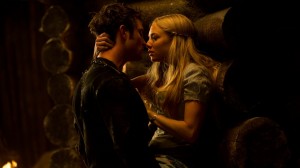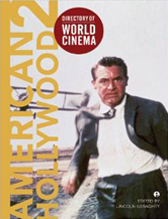
REVIEW: Red Riding Hood
It’s not uncommon for female sexuality to serve as a source of anxiety within horror cinema. However, in films such as Jacques Tourneur’s Cat People (1942), Brian De Palma’s Carrie (1976) or David Cronenberg’s Rabid (1977) the depiction of feminine monstrosity is geared toward an exploration of the cultural and political values that produce the female as ‘threatening other’.
More recently though, certain representations of the ‘monstrous feminine’ in Hollywood cinema have been decidedly less self-critical. For instance, in the Twilight franchise, the burgeoning sexuality of Bella, the film’s central female character, is cast in far more threatening terms than that of her monstrous love-interests: Edward (a vampire) and Jacob (a werewolf). A key motif of Twilight’s sexual schema is the insistent repression of Bella’s desires until they can be contained within a ‘socially acceptable’ discourse such as marriage. Failure to do so, we are constantly reminded, may result in a potentially uncontrollable evil. In that context alone, Twilight is unashamedly conservative.
 Continuing this recent trend, Red Riding Hood, a revision of the Brothers Grimm fairy tale, might well serve as a companion piece to the Twilight saga. Directed by Catherine Hardwicke (who not incidentally helmed the first Twilight movie), Red Riding Hood centres around a love struck young woman, Valerie (Amanda Seyfried), whose village has been waylaid by a menacing wolf. Typically placated through sacrificial animal offerings, when the beast kills one of their own (Valerie’s sister), the enraged townsfolk enlist the services of supernatural slayer, Father Solomon (Gary Oldman) to eradicate the monstrosity once and for all.
Continuing this recent trend, Red Riding Hood, a revision of the Brothers Grimm fairy tale, might well serve as a companion piece to the Twilight saga. Directed by Catherine Hardwicke (who not incidentally helmed the first Twilight movie), Red Riding Hood centres around a love struck young woman, Valerie (Amanda Seyfried), whose village has been waylaid by a menacing wolf. Typically placated through sacrificial animal offerings, when the beast kills one of their own (Valerie’s sister), the enraged townsfolk enlist the services of supernatural slayer, Father Solomon (Gary Oldman) to eradicate the monstrosity once and for all.
While Hardwicke is quick to emphasise the psychosexual content of this fairy tale – paralleling the wolf’s emergence with moments of forbidden romance and violence – the slapdash manner in which these sub-textual signs are woven throughout the narrative demonstrates an inability (or unwillingness) to engage them in any real detail. Everything is inscribed on the surface but with little or no thought as to its connotations. This is particularly so of Red Riding Hood’s striking visual design, which raises numerous questions/issues – i.e. why has Grandma been ‘relocated’ outside the village to live in a shack surrounded by thorny trees? – that the narrative sidelines.
 Avoiding any substantiative exploration of sexuality and monstrosity (despite ample opportunity), Red Riding Hood opts instead for turgid love triangles and tedious tween drama. More problematically though, in an effort to subvert the expectations of an audience familiar with the tale, Hardwicke converts the fable-like structure of Little Red Riding Hood into a whodunit style mystery in which the film’s central (if only) conflict becomes the unveiling of the (were)wolf’s identity.
Avoiding any substantiative exploration of sexuality and monstrosity (despite ample opportunity), Red Riding Hood opts instead for turgid love triangles and tedious tween drama. More problematically though, in an effort to subvert the expectations of an audience familiar with the tale, Hardwicke converts the fable-like structure of Little Red Riding Hood into a whodunit style mystery in which the film’s central (if only) conflict becomes the unveiling of the (were)wolf’s identity.
It’s a testament to the film’s lack of imagination that when the denouement finally arrives, the outcome is overwhelmingly traditional. As with Twilight, Red Riding Hood envisages a form of female heroism and independence that is limited by the need to conform to dominant patriarchal values. What’s worse is that here, Valerie’s ‘triumph’ makes her the willing instrument of her own oppression. Like a werewolf in human garb, Hardwicke’s work is a conservative tale that wishes to pass itself off as a feminist evocation of empowerment and sexual freedom. And in that disguise alone it is a monstrous failure.





RSS feed for comments on this post. TrackBack URI